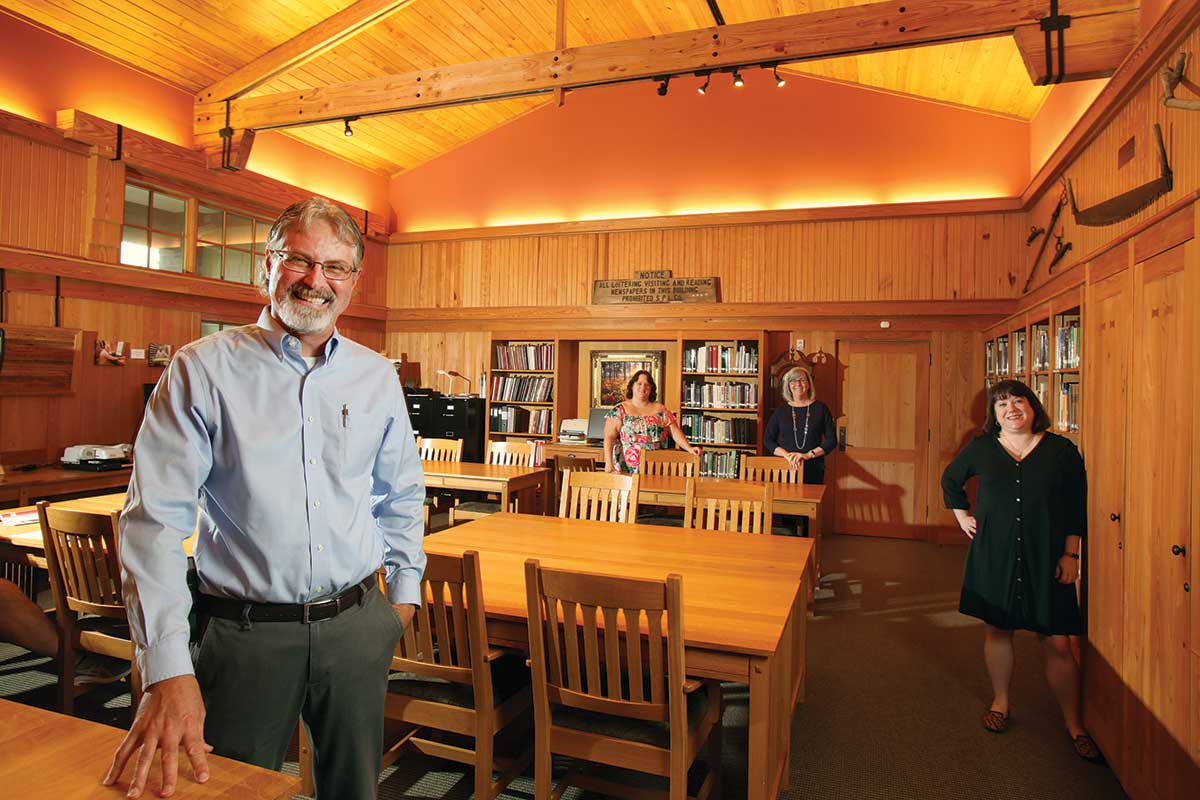Officially, the mission of the History Center in Diboll is to collect, preserve and make available historical records that tell the story of Angelina and surrounding counties.
The numbers tell the tale.
The center’s state-of-the-art archives boast more than 4,000 cubic feet of manuscripts and records, especially from prominent companies such as Southern Pine Lumber Co., Temple Lumber Co. and subsidiaries. They made Diboll an economic hub for decades. Thousands of land records, surveys, company documents and maps describe in detail the region’s topography, forests, highways, railroads and land ownership.
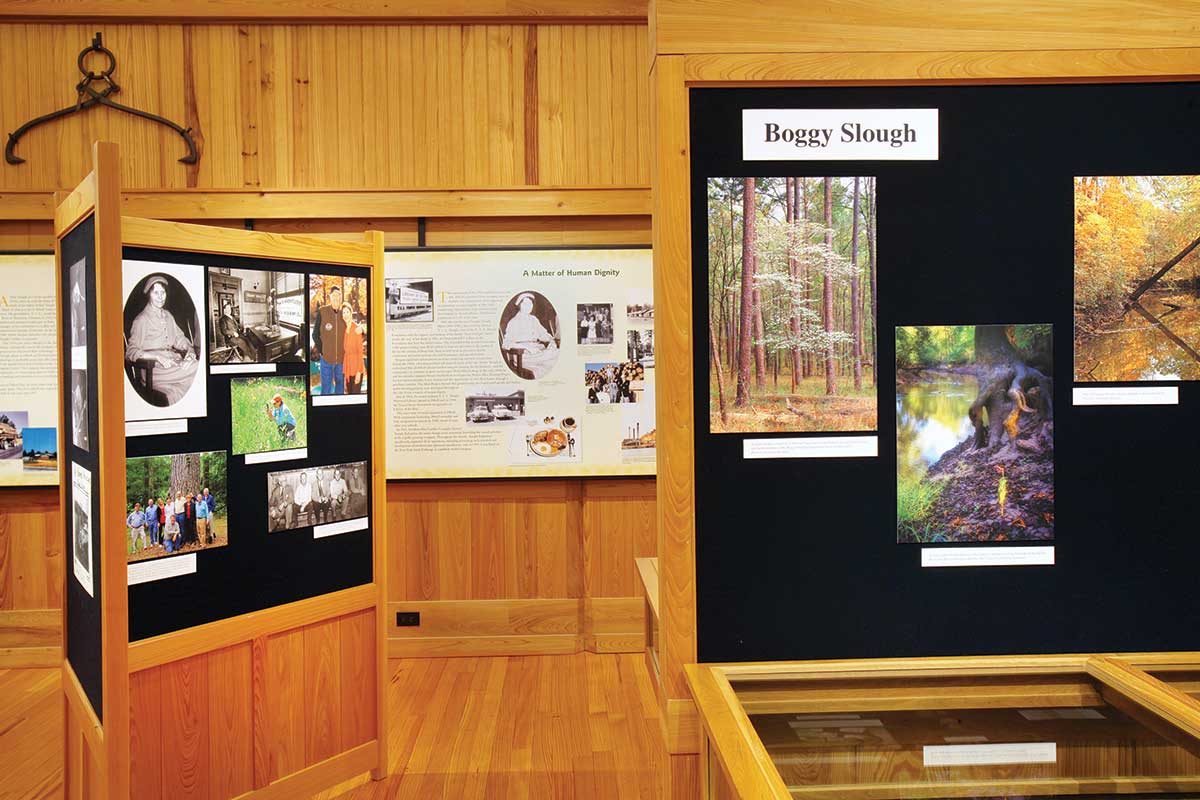
The exhibit room features display panels on the history of Diboll and nearby areas such as Boggy Slough.
Randy Mallory
Historical documents come from dozens of sources: chambers of commerce, public schools, civic clubs, municipalities and family histories. There’s also 65 linear feet of original printed newspapers and 700 reels of microfilm capturing life in and around Angelina County from 1913 to the present. The History Center has about a million photographs of local people, places, businesses and events. That includes 3,000 large-format negatives from the J. Shirley Daniel Photograph Collection covering the area’s forestry industries and Diboll’s community life.
The center’s mission has real-world meaning for a growing host of patrons looking for answers to personal questions. Take for example Sam Houston Electric Cooperative member Jerry Jackson of Conroe. The train buff wanted to build a model railroad in his office, specifically an early 1900s line run by the Frost Johnson Lumber Co. of Nacogdoches.
He had researched the subject for more than a year but still needed a detailed view of the company’s logo—a “must-have” item for visual accuracy of the line in small scale. After perusing the center’s online resources, Jackson requested certain promising items for his first in-person visit last May. Emily Hyatt, the center’s senior archivist, led him to the center’s spacious reading room, where she had laid out the requested materials. Tucked in that treasure trove of railroad memorabilia Jackson spotted the logo, clear as day, on an aging sheet of company letterhead.
Ellen Temple of Lufkin had a large-scale question to answer when she turned for help to the center’s small but dedicated staff. The longtime East Texas writer and independent publisher was knee-deep in producing a documentary film when the COVID-19 pandemic shut down major photo and film archives, including the National Archives in Washington, D.C. She desperately needed to locate compelling images for her film, Citizens at Last, which would showcase Texas women’s fight for the right to vote.
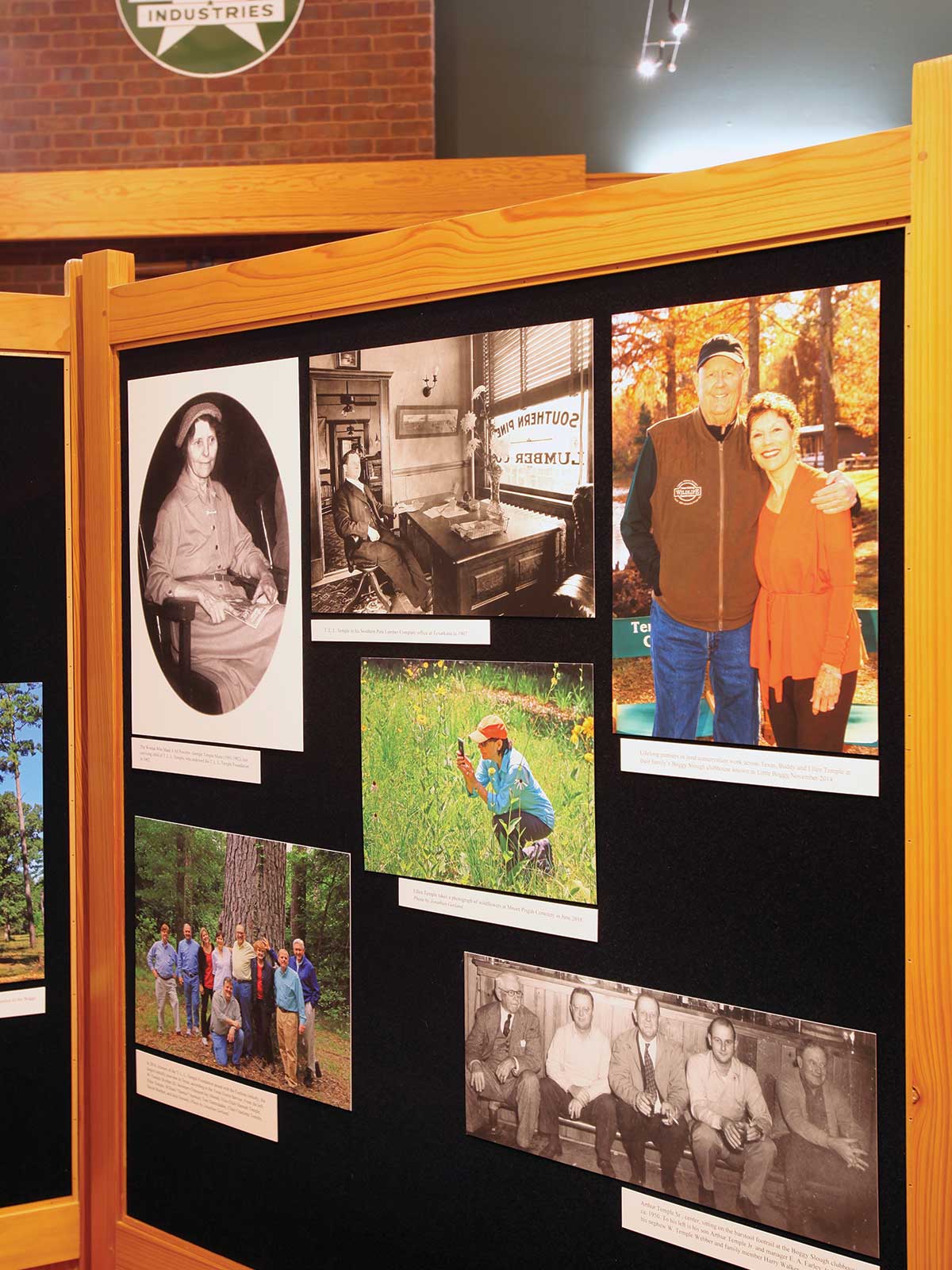
The exhibit room features display panels on the history of Diboll and nearby areas such as Boggy Slough.
Randy Mallory
She turned to smaller archives such as the History Center. Hyatt and History Center Executive Director Jonathan Gerland curated high-quality images of early 1900s rural East Texas women, 15 of which made it into the film.
“Among my favorites is a photo of a gathering of men and women on the Neches River bridge enjoying a Sunday visit on the railroad trestle,” Temple explains. “Development of the railroads was a key factor in the long fight for the vote. It gave the suffragists a way to get around and organize in a state as vast as ours.” Citizens at Last premiered last year on PBS and can be viewed online for free at citizensatlastfilm.com.
History of Growth
Seeking help from Diboll’s History Center was a natural decision for Temple. She and her late husband, Buddy, helped get the center off the ground nearly 20 years ago. It began as a records repository for the T.L.L. Temple family, which founded the Southern Pine Lumber Co. of Diboll and related businesses including Temple Industries, Temple Lumber Co., Temple Eastex and Temple-Inland.
The center grew beyond the Temple family’s archives to meet pressing community needs, explains philanthropist and environmentalist Ellen Temple. “Many of the folks who made history in Diboll and East Texas were passing on without a chance to tell their stories or to have a safe place to preserve their photos and papers,” she says. “Folks in East Texas are hardworking people. They love the land, forests and the rivers throughout the region. We are celebrating their contributions to the life and history of Texas by collecting, preserving and granting access to their stories.”
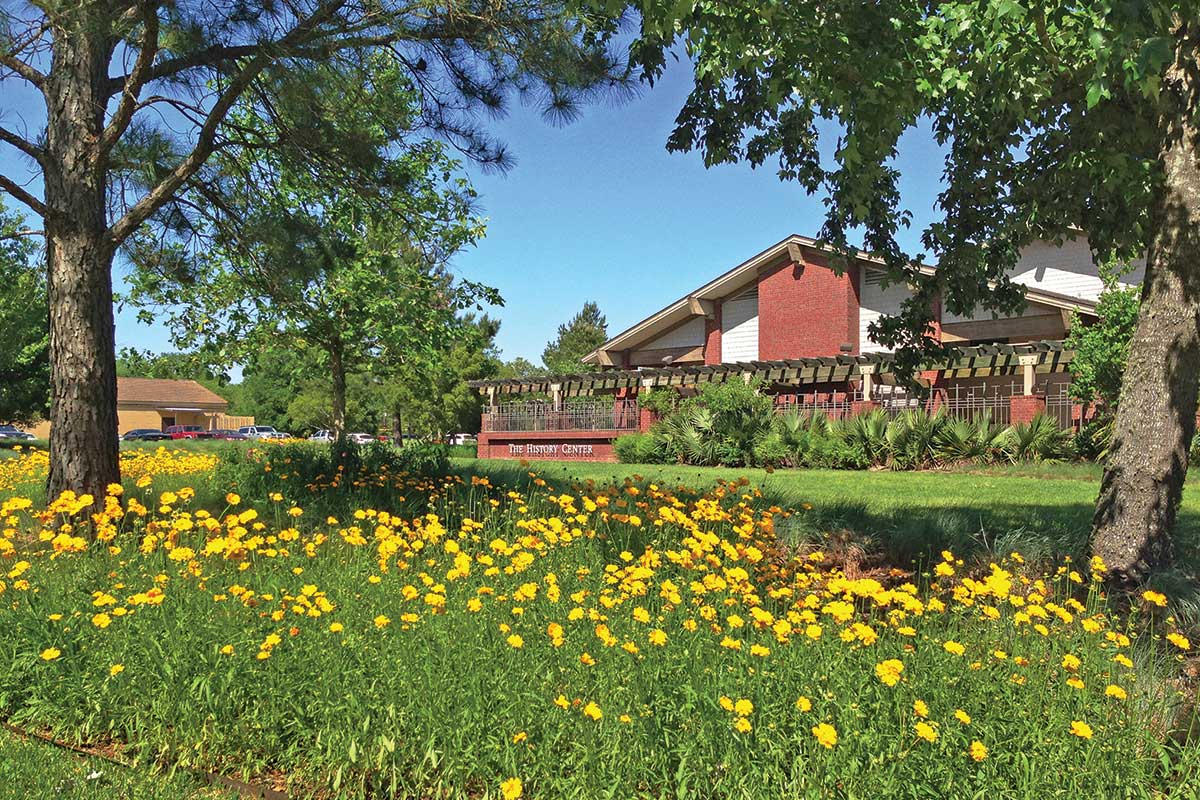
Native plants surround the center’s Craftsman-style building.
Jonathan Gerland
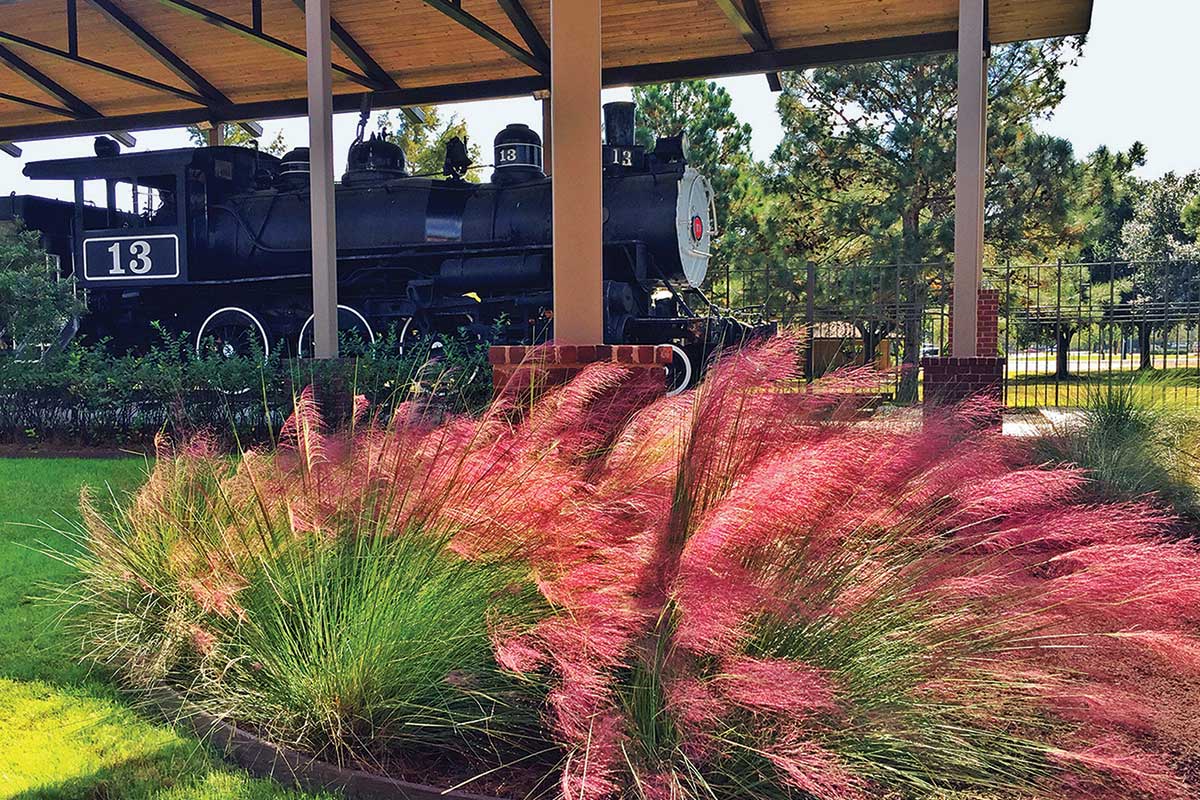
Colorful native Gulf muhly grass decorates the landscape near Engine 13.
Jonathan Gerland
The History Center’s Craftsman-style building exudes the welcoming ambiance and wood-grained feel you expect from a repository of Piney Woods history. The floors, walls and ceilings are comprised of heart pine and cedar, custom cut and locally milled. The natural wood glow in the exhibits room surrounds a permanent display of photos and information panels that tell the story of Diboll and regional forest and transportation industries. Rotating temporary exhibits spotlight other forest communities and landforms. The current temporary exhibit highlights the Boggy Slough Conservation Area through excerpts from Gerland’s new book, Boggy Slough: A Forest, a Family, and a Foundation for Land Conservation.
The center’s outdoor exhibits feature Engine 13, a restored 68-ton Baldwin 4-6-0 steam locomotive built in 1920. It operated as part of the Texas Southeastern Railroad. There’s also a Southern Pine Lumber Co. log car and Texas Southeastern Railroad caboose number 6.
A nearby courtyard sports a statue of T.L.L. Temple’s grandson, Arthur Temple Jr., a timber man and early environmentalist who promoted creating the Big Thicket National Preserve. Appropriately, the center’s landscaping displays showy native plants—like Gulf muhly and bluestem grasses, purple cone and cardinal flowers, and “Dam B” wisteria growing beneath towering pines, oaks and maples.
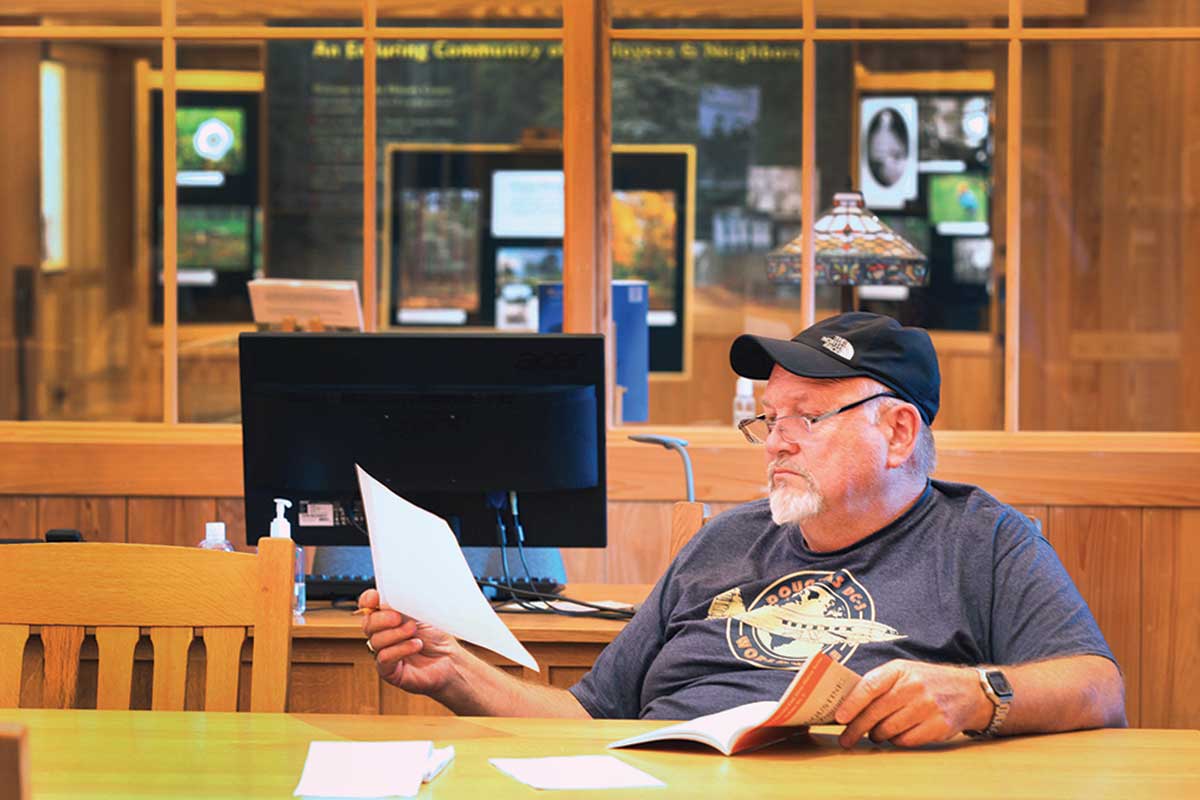
Barley Lenderman of Diboll comes to the center’s reading room several days a week to research a range of historical topics.
For some patrons, the center quenches an insatiable thirst for history. Most days, Barley Lenderman of Diboll sits in the reading room. He is as much a fixture as the books and microfilm readers lining the cypress walls. Retired from Angelina County Airport, Lenderman has found historical research a perfect hobby.
“I’ve always been curious about the past,” he says. “I started spending time with this almost endless supply of archival records about the people and companies that have graced this area.” He particularly appreciates the center’s staff, who are always there to lend a knowledgeable hand.
On-Site and Online
After an impromptu visit to the center, another retiree, Patty Oltremari of Woodville, was so impressed by the staff’s commitment to historical preservation that she signed on as a regular volunteer.
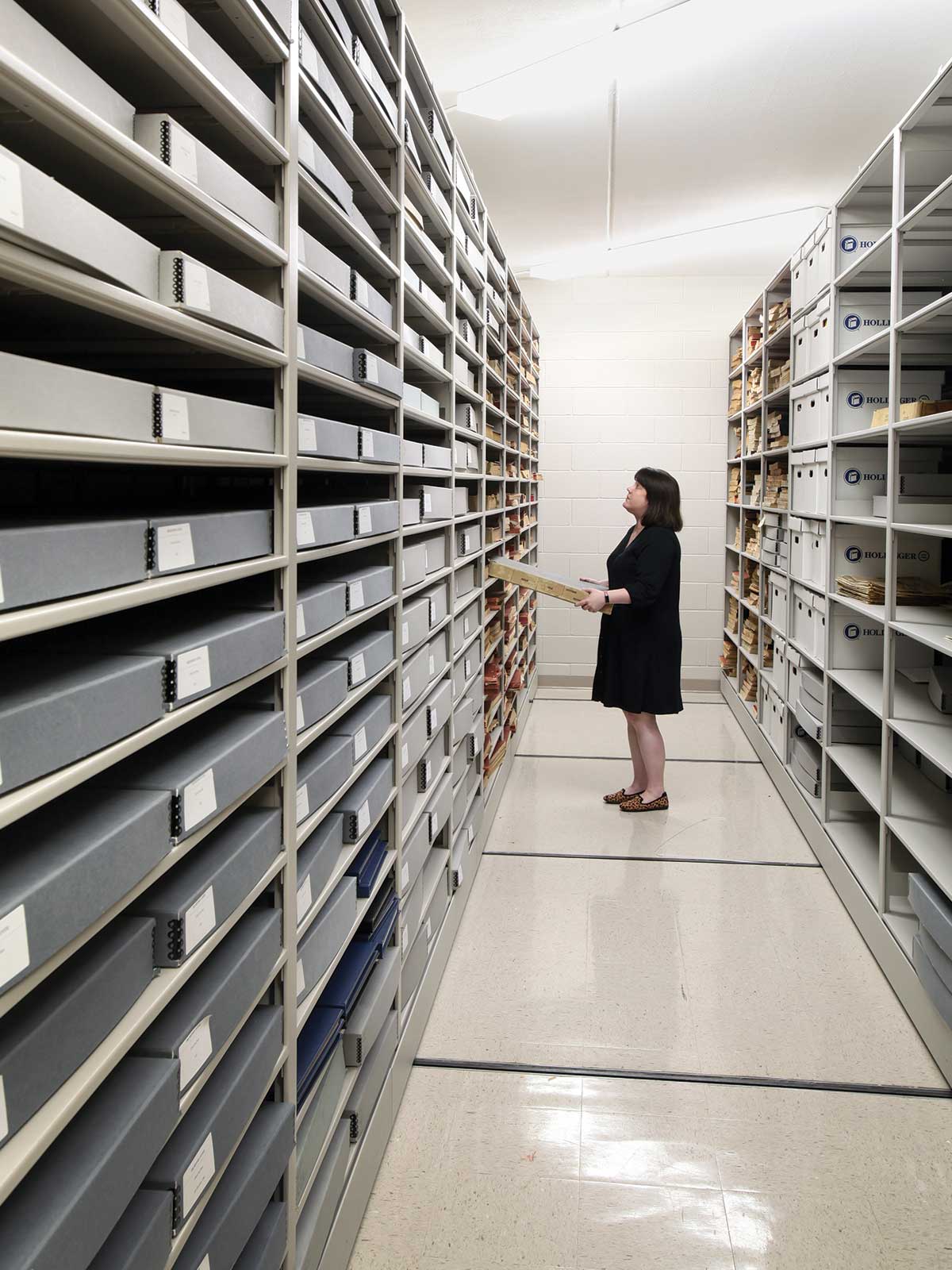
Senior Archivist Emily Hyatt pulls historical documents from the center’s secured archival vault for researchers.
Randy Mallory
“I work behind the scenes mainly scanning documents and photos and cataloging them,” Oltremari explains. She works under the supervision of Hyatt, who says the center is placing “more emphasis on digitizing our physical collections and making them available online. As more collections are digitized, we create more ‘finding guides’ to help online researchers locate what’s available.”
Also available online is the center’s annual magazine, The Pine Bough, which highlights new acquisitions and other topics of special interest, replete with historical photos and current images of East Texas forests and rivers.
One of the center’s prime online collections features audiotape oral histories with interviewees of diverse racial identities and class backgrounds discussing all sorts of topics. The oral history project contains some 500 interviews from the 1950s to the present, complete with interviewee photos, transcripts, and audio files for streaming or downloading. The project won an award from the Texas Oral History Association, and many of its interviews contributed to the 1998 book by Thad Sitton and James H. Conrad called Nameless Towns: Texas Sawmill Communities, 1880–1942.
The ease of researching online as well as on-site proved especially helpful for Ron Price of Houston, who’s written several genealogy books on his family. His latest project began as a history of his grandfather Montana Lillie, who lived in Lufkin from the 1920s until his death in 1971. After discovering the wealth of African American history archived at the History Center, Price changed course.
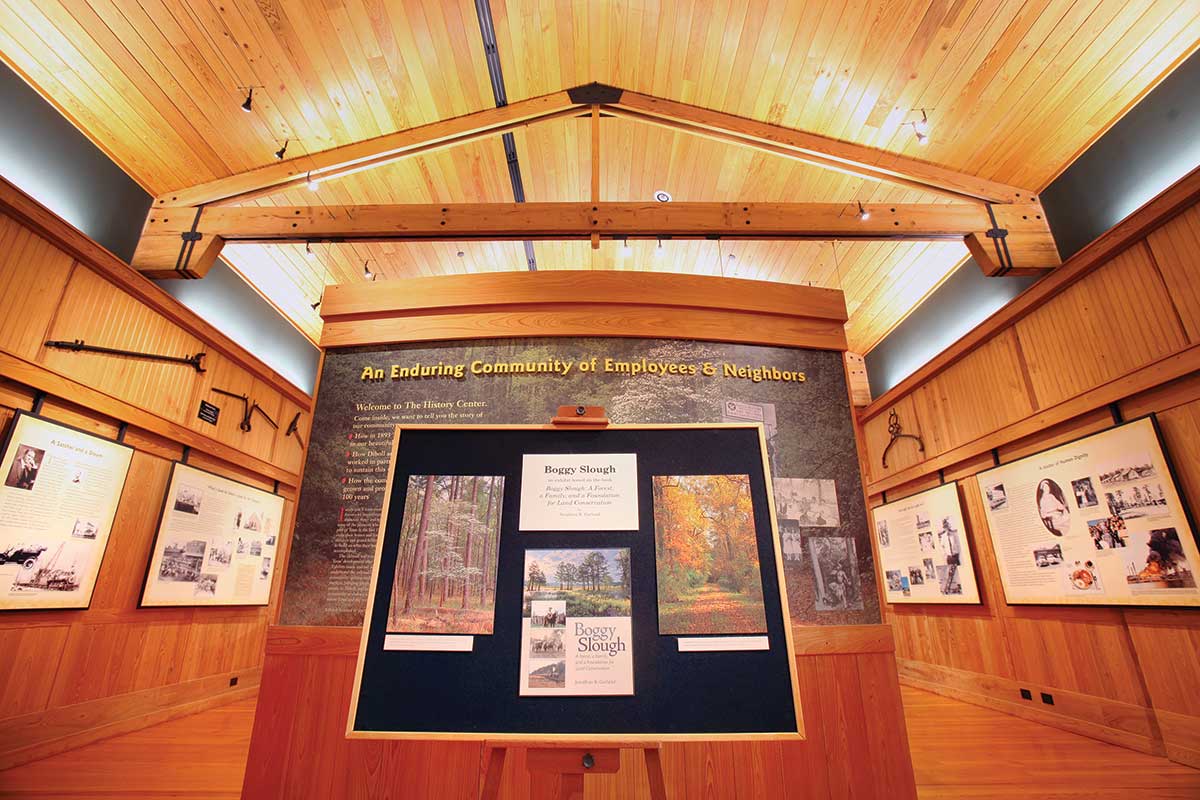
The exhibit room features display panels on the history of Diboll and nearby areas such as Boggy Slough.
Randy Mallory
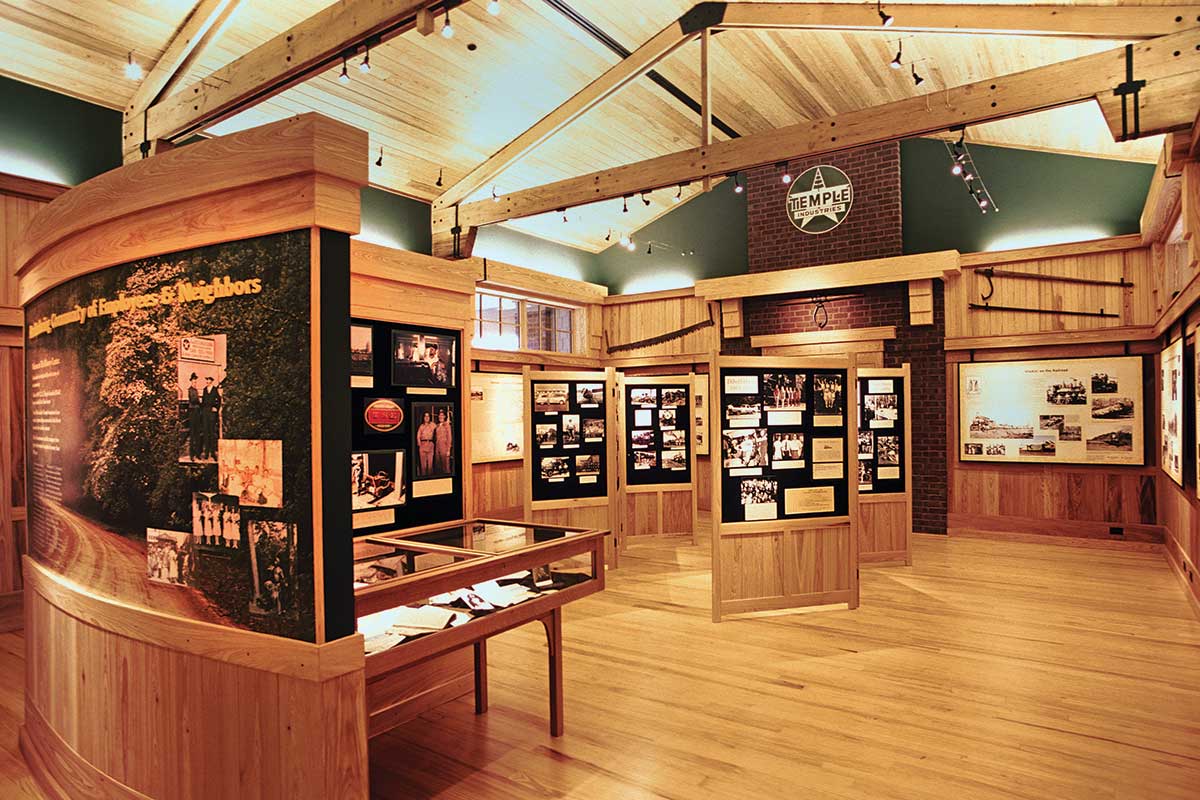
The center’s permanent exhibit area tells the history of Diboll.
Jonathan Gerland
“I wanted to write about not just my grandfather but all the other grandfathers and grandmothers who led unremarkable but proud lives during this era,” he says. “I wanted their story to be told and not forgotten.”
He finished the book, Early Lufkin Texas From an African American Perspective, this past spring. The book is now available on Amazon.
“The key to the book was the [oral history] interviews that created a timeline and backdrop for the era I was detailing,” Price says. “It led me on a personal journey where I better understood the historical significance of … where I grew up. I discovered pictures of my [late] mother and aunts as track stars, queens and debutantes in their youth. My only regret is that I could not share this information with them.”
Helping folks connect the dots between past and present remains the real mission of the History Center, notes executive director Gerland.
“We believe every day is another day of history,” he says. “While we live life forward, we understand it backward. History connects people to each other and to something larger than themselves across time and space. To do so, we tell stories. Everyone has a story, and everyone’s history matters. By studying the past, history is the basis of understanding that there is even hope of a future.”
